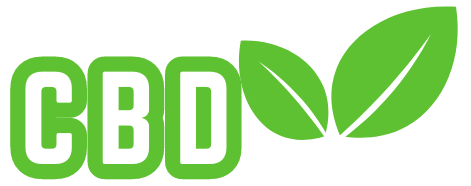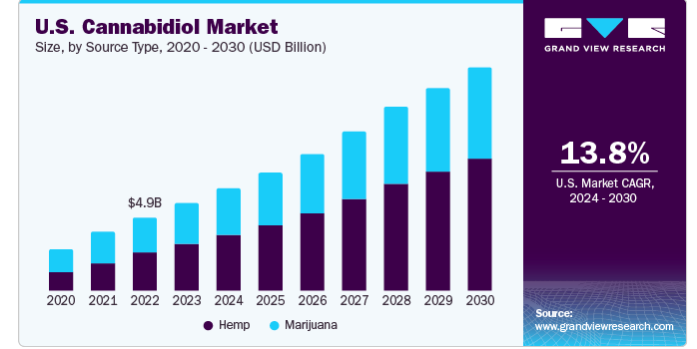Cannabidiol (CBD) is extracted from hemp and Cannabis sativa plants. The increasing popularity of CBD is uncontroverted because it holds great potential as a therapeutic agent in wellness products owing to its versatility. Taken orally as oils, capsules, or edibles or applied topically as lotions and creams, CBD acts on the body’s endocannabinoid system, modulating different physiological activities like mood, perception of pain, and immune response.
Source- pexels
Current Views on the Use of CBD
According to recent surveys, there is a high interest in CBD among U.S. adults. In a study by Forbes Health via OnePoll, nearly 60% of those responding to the survey said they had used CBD products and associated those with medicinal benefits. Almost 62% use CBD for different medical conditions, from cautious pain and anxiety relief to depression. Interestingly, while nearly two-thirds of U.S. adults think CBD is safer than alcohol, only 44% would want to see it legal across the country, underscoring mixed perceptions and regulatory complexities. Shifting consumer sentiment on CBD underscores a changing field in which health and wellness priorities drive consumption decisions.
Demographic Insights on CBD Use
Demographic breakdowns express an age-gender factor in the different levels of adoption of CBD. Surprisingly, usage rates for young adults are contained at 18-25 years of age, compared to older demographics, where nearly 90% of those aged 77 and above consume CBD. Another characteristic is men and women who consumed CBD at similar levels, proving broad demographic appeal and accessibility of CBD products for consumers. In effectively getting to an extensive range of demographics and tastes among consumers, these insights suggest that there is supposed to be a targeted marketing approach.
Economic Dynamics and Trends in the Marketplace
The U.S. CBD market, setting the pace for growth since 2014, grew from $108 million to nearly what is forecasted to be almost $1.9 billion by 2022, according to Statista. Despite economic headwinds, consumer spending on CBD has been pretty relentless to this day, with approximately one in every five customers having spent at least $50 per month on its products. CBD gummies, capsules, oils, and topical lotions are results-oriented products that respond positively to modern consumers’ different consumption needs and lifestyles. It evolves and innovates pricing strategies and product offerings to ensure consumer engagement and market competitiveness.
Regulatory Challenges to the Legality of CBD and Public Perception
The challenges in the regulatory framework that exist for CBD stakeholders have a lot to say about the market dynamics and consumer trust. While a majority view CBD as safe, it is not socially acceptable. Only 45% of the respondents consider it socially acceptable. Ambivalence to the legal status of CBD prevails, with large fractions for and against legality, pointing to an important role that clear regulatory frameworks and public education could play. A lack of clarity in the regulatory environment requires industry leaders to champion the cause of standardized practices and transparency to consumers for their confidence and compliance with regulatory provisions.
Source- Pexels
Health Benefits and Medical Applications
It has been proven through studies and a good deal of anecdotal evidence that CBD is a compound that helps in reducing the symptoms of many medical conditions, from chronic pain to anxiety disorders and sleep disturbances. With more research still emerging, all that information will prompt healthcare providers and consumers to investigate further CBD use, thus enabling its increased adoption and integration into mainstream healthcare practices. The changing landscape with respect to the therapeutic benefits of CBD underscores current efforts at broadening both medical research and consumer education programs.
Market Strategies and Consumer Engagement
The market strategy will be instrumental in deciding the trajectory of the CBD market. Through digital campaigns, brands are increasing awareness, trust, and loyalty by influencing consumer perception. Such differentiated marketing tools can aid the product differentiation strategy in capturing diverse consumer segments, engaging them, and retaining their loyalty in the competitive dynamics prevalent in the market. Agile marketing techniques with strong health-conscious appeal will be of great importance for long-term growth and market leadership in this new world, where the tastes of consumers are seen to shift rapidly.
Final Words
The 2024 CBD market shall be driven by fast growth, changing consumer perception, and doubtful regulatory clarity. Therefore, embracing innovation, strict adherence to high-quality standards, and deliberate handling of regulatory obstacles will allow stakeholders to ride out the opaqueness and unlock enormous opportunities in the expanding CBD landscape.
References
Statista- https://www.statista.com/topics/6232/cbd-market/
New Frontier Data- https://newfrontierdata.com/

